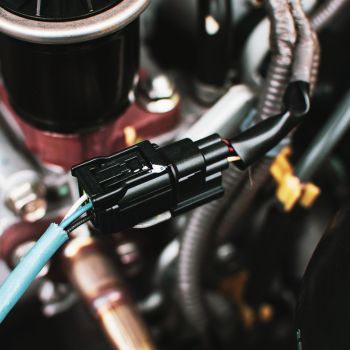Like any other component of your vehicle, sensors can degrade over time due to wear, contamination, or electrical malfunctions. When this happens, it can lead to a cascade of problems that affect the overall performance of your car. Here's what you need to know about car sensors and their importance. Since the 1980s, the ECM has become a central feature in vehicle engineering, working alongside the OBD-II system to gather and analyze data from multiple sensors. This information helps fine-tune your car's performance, ensuring smooth operation and efficient fuel consumption. Some key sensors include: Over time, sensors can accumulate dirt, grime, or chemical residues from engine fluids, which can interfere with their accuracy. Electrical faults or connectivity problems can also disrupt communication between sensors and the ECM. When sensors fail or malfunction, you might experience: If your car feels sluggish or unresponsive but you haven't pinpointed the root cause, it might be time to schedule a diagnostic test. At DaSilva’s Auto Body, our skilled technicians can assess your sensors, ECM, and other systems to identify and address any underlying issues. Don't let minor problems escalate—contact us today to keep your vehicle running smoothly! Remember, regular maintenance is key to extending the lifespan of your car's sensors. Keeping them clean, ensuring proper connections, and addressing issues promptly can save you both time and money in the long run. If you're unsure about any aspect of your car's performance, don't hesitate to seek professional help. Your car will thank you! Plastic Shredder,Single Shaft Shredder,Plastic Shredder Machine,Plastic Single Shaft Shredder,Plastic Shredding Machine Zhangjiagang Polestar Machinery Co.,Ltd , https://www.polestarpm.com Modern cars are packed with sensors that constantly monitor everything from oil levels to tire pressure, sending crucial data to the onboard diagnostic computer (OBD-II) within the engine control module (ECM). These sensors play a critical role in maintaining optimal vehicle performance and efficiency.
Modern cars are packed with sensors that constantly monitor everything from oil levels to tire pressure, sending crucial data to the onboard diagnostic computer (OBD-II) within the engine control module (ECM). These sensors play a critical role in maintaining optimal vehicle performance and efficiency.Understanding How Car Sensors Operate
Frequent Sensor Problems and Their Symptoms
Common Car Sensor Problems
The Plastic Shredding Machine is a crucial device in the plastic recycling industry, designed to break down plastic waste into smaller, manageable pieces.
1. Single Shaft Shredder
Professional Parameters: Equipped with a single rotating shaft with sharp blades, suitable for a wide range of plastic materials including films, bottles, and containers. The output particle size can be controlled by the screen mesh size, typically ranging from 20-26mm for hard materials.
2. Double Shaft Shredder
Professional Parameters: Features two counter-rotating shafts with interlocking teeth, providing enhanced cutting efficiency and versatility. It can handle bulky or thick plastic items, such as automotive parts and electronic waste.
3. Horizontal Shredders
Professional Parameters: Features a horizontal orientation, with materials fed into the top of the machine and discharged from the side or bottom. It is well-suited for continuous shredding operations and can handle large volumes of plastic waste with ease.
Efficient and reliable, designed for continuous operation. It can process large volumes of plastic waste, making it suitable for large-scale recycling operations.
Application Scenarios: Widely used in industrial settings where large volumes of plastic waste need to be processed continuously.